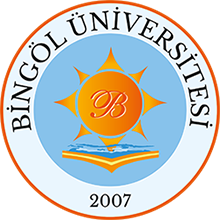Wild edible plants and their traditional use in the human nutrition in Manyas (Turkey)
Date
2018Author
Kayabasi, Nihan Poyraz and Tumen, Gulendam and Polat, Ridvan
Metadata
Show full item recordAbstract
Ethnobotany is a preliminary method of research, suitable for gathering
information on the nutritional use of plants. This paper aims to present
the ethnobotanical field research data on food plants used in Manyas
region. It provides a general perspective on their significance in past
and present Manyas, and examines the concept of wild edible plants as
medicinal plants. The information about the use of wild edible plants
was collected from 4 different open-air-markets and 14 villages in the
city over a period of two years (2009-2011), through unstructured
interviews. In this study, a total of 58 wild food plant taxa belonging
to 25 families were established and also plant parts used, ethnographic
data related to vernacular names, traditional use were recorded. Family
Lamiaceae is represented by the highest number of taxa (10), followed by
Astaraceae (7), Rosaceae (6), Apiaceae (5). The most commonly used
species in the region are Apium graveolens L. (kereviz), Oenanthe
pimpinelloides L. (hadik), Petroselinum crispum (Mill.) Fuss (maydanoz),
Lepidium sativum L. (tere), Nasturtium officinale R. Br. (gerdeme),
Malva neglecta Wallr. (ebegiimeci), Papaver rhoeas L. (gelincik), Rumex
tuberosus L. (kuzukulaki), Rumex patientia L. (labada), Polygonum
amphibium L. (kune) and Urtica dioica L. (isirgan). The study showed
that the plants used are either eaten raw, or cooked by boiling in
water, frying in oil, baked to be served as dishes such as stew, salad
as hot drink. The study can provide a basic data that may be helpful for
prioritization of conservation through sustainable use and management of
the resources.
Collections

DSpace@BİNGÖL by Bingöl University Institutional Repository is licensed under a Creative Commons Attribution-NonCommercial-NoDerivs 4.0 Unported License..













